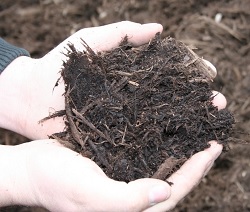Floral Design with Cara: Mulch Simplified
By Cara Ewald on July 04, 2014 from Floral Design with Cara via Connect-Bridgeport.com
 Not only is mulch visually appealing, but it also improves the health and fertility of the soil, impedes weed growth, protects roots on particularly hot days, and helps plants conserve moisture. There are two types of mulch, organic (for example: bark, leaves, compost, grass clippings, etc.) and inorganic (for example: stone). Organic is a temporary option; whereas, inorganic mulch is a more permanent mulch. It is important to choose the right type of mulch for your garden area. You may also want a groundcover or living mulch, which slow the growth of weeds, to complete your garden.
Not only is mulch visually appealing, but it also improves the health and fertility of the soil, impedes weed growth, protects roots on particularly hot days, and helps plants conserve moisture. There are two types of mulch, organic (for example: bark, leaves, compost, grass clippings, etc.) and inorganic (for example: stone). Organic is a temporary option; whereas, inorganic mulch is a more permanent mulch. It is important to choose the right type of mulch for your garden area. You may also want a groundcover or living mulch, which slow the growth of weeds, to complete your garden.
The most popular type of mulch is organic. The trick to mulch, don’t overthink it. Follow these simple steps:
Not too thick, not too thin. Spread mulch about 2 to 3 inches thick. Anything thicker could harbor pests, but at the very least is wasteful and unnecessary.
There's no perfect time to apply mulch to beds. Your plants will welcome mulch anytime of the year. If you apply mulch in late fall or early winter and you live in a cold climate, wait until the ground freezes before mulching.
Mulch trees and shrubs properly. Mulching around trees and shrubs is a great way to prevent injury from mowers and trimmers. As with beds, spread mulch 2–3 inches thick. Do not pile mulch against the trunk like a volcano -- this can encourage pests and diseases.

